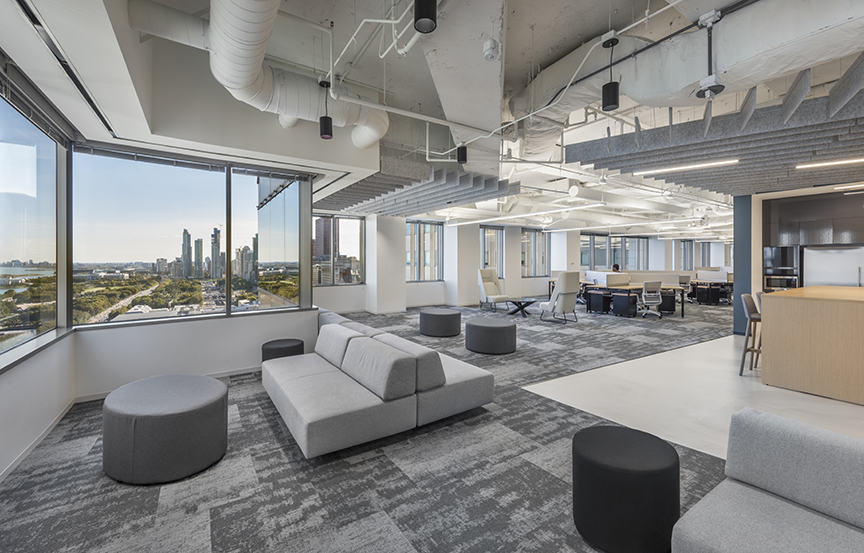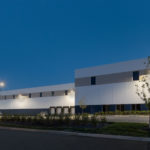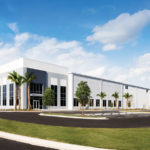
Office landlords use health pledges to woo leery tenants
Hoping workers will feel safe back at their desks, building owners are investing in certifications of cleaning and safety practices.
By
/cdn.vox-cdn.com/uploads/chorus_image/image/68819795/WELL_210_N._Carpenter.0.jpg)
Many office workers haven’t seen their desks in months. With vaccines offering hope for subduing the pandemic, a nagging thought is commonplace: Once there’s a general return to work, how safe will that place be?
Some landlords, worried about unused space or slack demand, are taking extra, and sometimes expensive, steps to assure tenants about cleanliness and health. They are getting third-party validations that their practices promote well-being. Returning tenants can expect to see those certifications enshrined in decals or plaques to make them less anxious about working away from home again.
Prolific Chicago developer Sterling Bay is an example of one approach. For six of its office properties spanning the Loop, River West and Fulton Market, Sterling Bay has attained the WELL Health-Safety Rating. The developer is among the first here to obtain that rating, administered by the for-profit International WELL Building Institute, for a portfolio of its properties.
Others are following a more rigorous program from the same institute that confers what’s called WELL Certification. It’s far more expensive than the health-safety rating, potentially setting back the owner of an office skyscraper more than $100,000. It requires on-site verification around 10 core concepts, ranging from air and water quality to whether there is fresh fruit in the building or quiet spaces to reduce stress.
It goes well beyond controlling a pandemic. But supporters say COVID-19 has raised awareness about health in the workplace and that landlords have to meet new standards to compete for tenants.
“We cater to those tenants that are in competitive recruiting situations” such as firms in law and financial services, said developer John O’Donnell, CEO of Riverside Investment & Development, which has finished an office tower at 110 N. Wacker Drive and is building another at 320 S. Canal St. O’Donnell said he’s seeking the platinum level of WELL Certification, the highest grade, for his buildings. “We value a certification from an independent third party,” he said.
:no_upscale()/cdn.vox-cdn.com/uploads/chorus_asset/file/22293780/BMO_Harris_320_S._Canal.jpg)
A rendering of the office tower at 320 S. Canal St. to be anchored by BMO Harris. Union Station is on the left.
Buildings downtown that have earned WELL Certification, according to the program’s website, are at 151 N. Franklin St. and 155 N. Wacker Drive, which are office developments of the John Buck Co., and the Essex on the Park apartment building, 808 S. Michigan Ave. Besides platinum, additional levels include gold and silver that attest to a building meeting specific goals.
WELL Certifications are good for three years and reduced rates apply for renewals, said a spokesperson for the WELL Building Institute. In contrast, the WELL Health-Safety Rating must be renewed annually.
Other building owners question whether the ratings are worth it, are confusing to the average person or convey a false sense of security about the coronavirus. Sponsors of WELL and a competing program called Fitwel caution there can be no guarantees that a person can’t catch a virus at work.
“A lot of these programs are, with all due respect, kind of a gimmick to attract tenants,” said John Murphy, who has invested in offices, hotels and residential projects here. He said landlords are taking extraordinary measures in response to the pandemic, but many don’t see the cost of certification programs as being worth it.
Sterling Bay’s WELL Health-Safety Ratings show its commitment “to preparing our properties for a safe and healthy return to the workplace,” said CEO Andy Gloor. Its ratings apply to its One and Two Prudential Plaza, 111 N. Canal St., 210 N. Carpenter St., 311 W. Monroe St., 333 N. Green St. and 600 W. Chicago Ave.
:no_upscale()/cdn.vox-cdn.com/uploads/chorus_asset/file/22293766/210_NCarpenter_Media.jpg)
The office building at 210 N. Carpenter St., owned by Sterling Bay, that carries a WELL Health-Safety Rating.
As a lower-cost way to get the coveted WELL best practices seal, the rating system calls for a third-party review of documents submitted by the developer, but without on-site checking. Its cost for the rating is $4,200 with discounts for multiple properties.
Fitwel is a similar lower-end certification program, but it entitles buildings to display the award for three years.
Brian Hungerford, design director and practice area leader at the Gensler architectural firm, said that even at the more modest scale, he regards the WELL system as more exacting and incorporating the latest in scientific research. He said studies show tenants are willing to pay higher rents in buildings seen as following advanced protocols for health. Over time, such certifications could become a common attraction, such as the LEED designation that promotes environmental awareness, Hungerford said.
Jamie Matos, a spokesperson for the WELL institute, said the program has drawn increased interest due to COVID-19. Since the pandemic’s start, the program has gotten about a million square feet of building registrations per day around the globe, bringing it to more than 800 million square feet, she said.
Fitwel, meanwhile, works with the nonprofit Center for Active Design, an organization Michael Bloomberg started in 2012 to promote health standards in building design. Reena Agarwal, chief operating officer of the center, said it assigns points to buildings based on such factors as its natural light and whether there’s easy access to stairs as an alternative to elevators. She said the emphasis is on promoting an array of healthy practices.
“This is what we do best. We translate public health standards for the real estate industry,” she said. The three-year certification cost is based on building size, but averages $6,500, she said.
More than a dozen downtown buildings have Fitwel certifications, according to a list from a spokeswoman. They include the Merchandise Mart and buildings at 200 W. Madison St. and 231 S. LaSalle St. Many of the certifications pre-date the pandemic.

